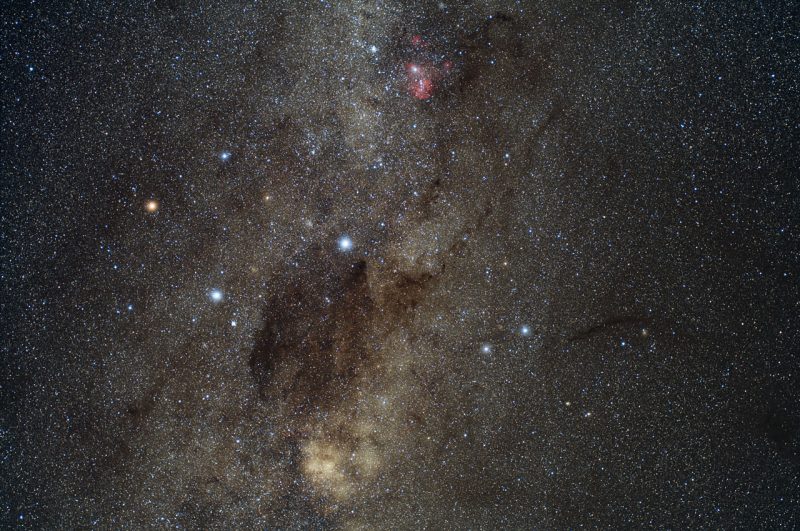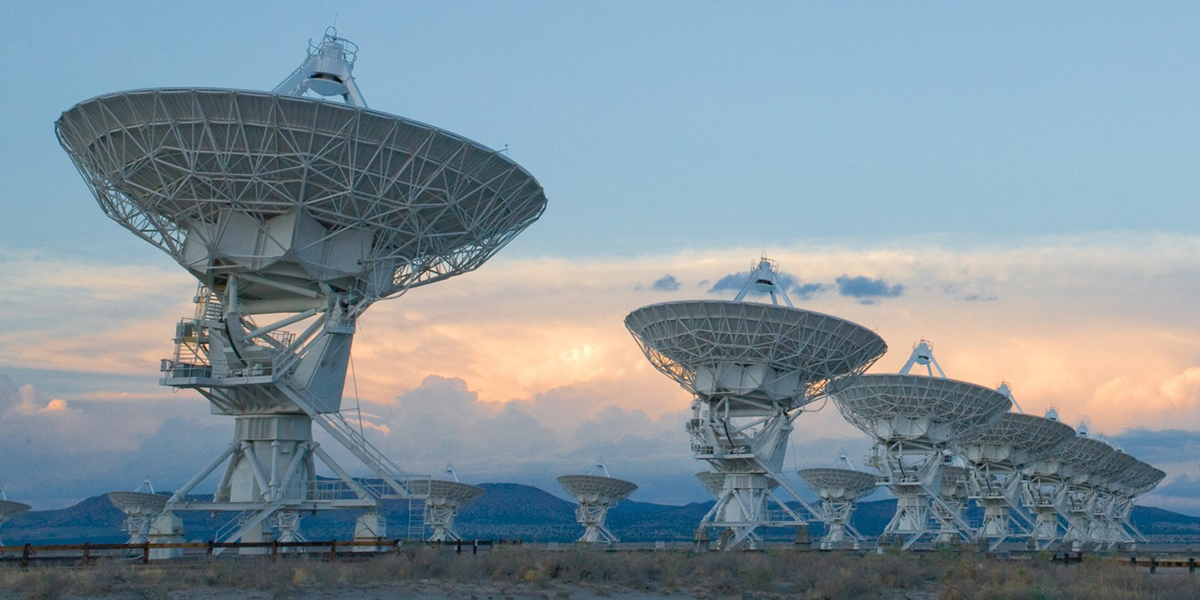It’s that time again! This week’s Carnival of Space is hosted by Pamela Hoffman at the Everyday Spacer blog.
NASA’s Peggy Whitson Safely Returns Home in Soyuz from Record Breaking Stay in Space
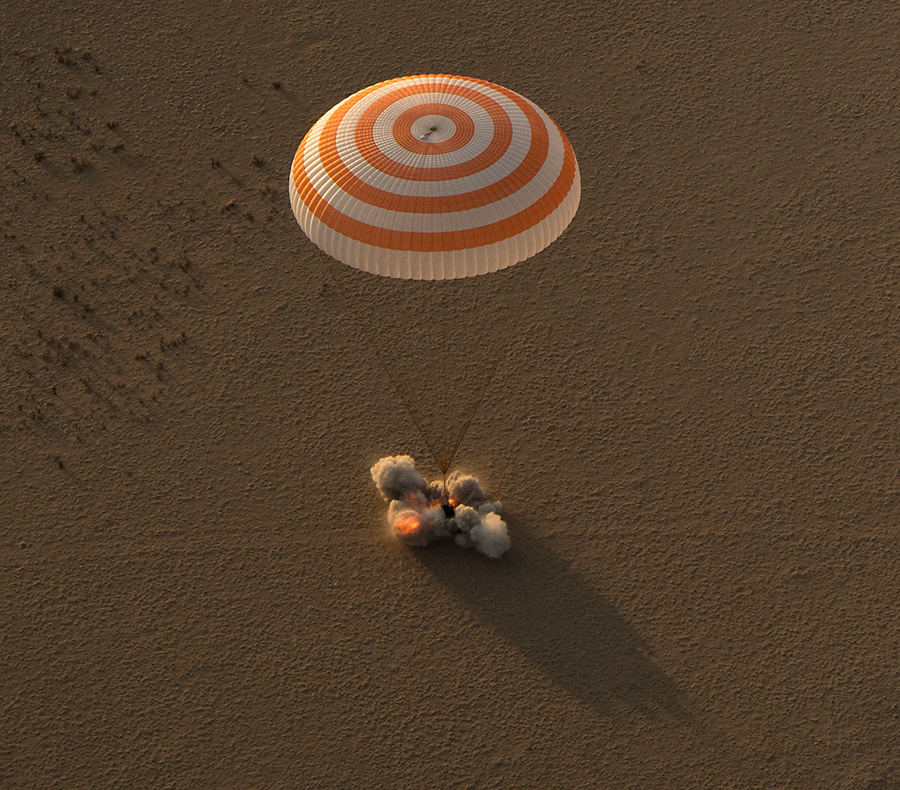

NASA’s Peggy Whitson, America’s most experienced astronaut, returned to Earth safely and smiling Sunday morning on the steppes of Kazakhstan, concluding her record-breaking stay in space aboard the International Space Station (ISS) along with Soyuz crewmates Jack Fischer of NASA and Commander Fyodor Yurchikhin of Roscosmos.
The multinational trio touched down softly on Earth inside their Soyuz MS-04 descent capsule on Saturday evening, Sept. 2 at 9:21 p.m. EDT (shortly after sunrise 7:21 a.m. Kazakhstan time, Sept. 3), some 90 miles southeast of the remote town of Dzhezkazgan in Kazakhstan.
Whitson wrapped up a 288-day extended mission in obviously good health that began in November 2016, spanning 122.2 million miles and 4,623 orbits of Earth – completing her third long-duration stay on the orbiting science outpost spanning Expeditions 50, 51 and 52.
“A flawless descent and landing,” said NASA commentator Rob Navias during the live NASA TV coverage of the return of the ISS Expedition 52 crew Saturday afternoon and evening US time.
“The crew is back on Earth safe and sound.”

She has now accrued a total of 665 days in space – more than any American astronaut – over the course of her illustrious career during which she set multiple U.S. space records spanning a total of three spaceflights.
Whitson’s 665 total accumulated days in space places her eighth on the all-time space endurance list – just 8 days behind her Russian crewmate and Soyuz Commander Fyodor Yurchikhin who now ranks 7th on the all-time list with 673 days in space on his five flights. She has exceeded the endurance record of her next closest NASA competitor by 131 days – namely NASA astronaut Jeff Williams.
The remarkable 57-year-old Ph.D biochemist by training has spent nearly 2 years of her entire life in space and she holds several other prestigious records as well – including more accumulated time in space than any other woman and the longest single spaceflight by a women – 288 days!
During this mission Whitson became the first woman to serve twice as space station commander. Indeed in 2008 Whitson became the first woman ever to command the space station during her prior stay on Expedition 16 a decade ago. Her second stint as station commander this mission began earlier this year on April 9.
Whitson also holds the record for the most spacewalks and the most time spent spacewalking by a female astronaut. Altogether she has accumulated 60 hours and 21 minutes of EVA time over ten spacewalks -ranking her third most experienced in the world.
Notably Soyuz Commander Yurchikhin ranks fourth in spacewalking experience. Only Russia’s Anatoly Solovyev and NASA’s Michael Lopez-Alegria have more spacewalking time to their credit.
NASA’s Jack Fischer completed his rookie spaceflight accumulating 136 days in space aboard the ISS.
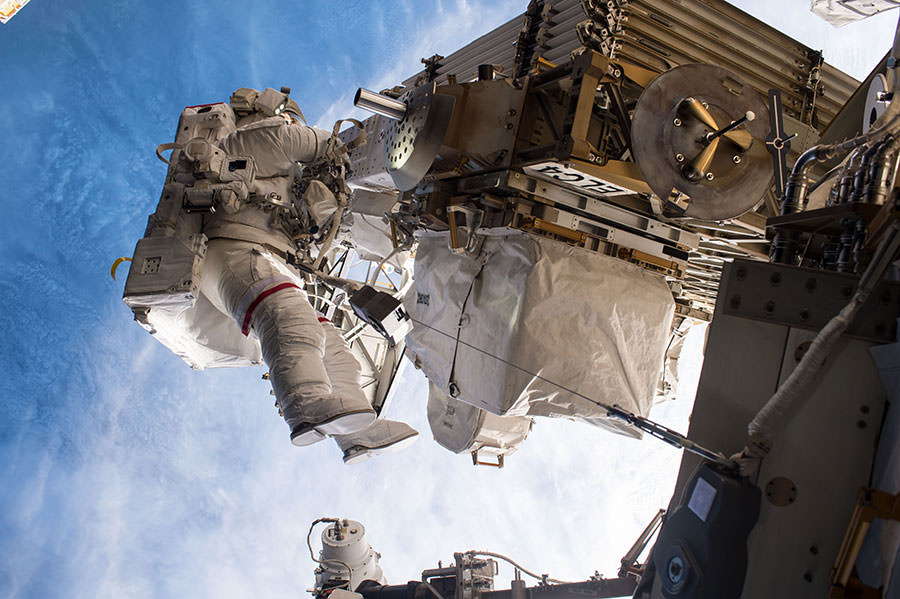
Whitson originally launched to the ISS on Nov 17, 2016 aboard the Russian Soyuz MS-03 spacecraft from the Baikonur Cosmodrome in Kazakhstan, as part of the three person Expedition 50 crew including flight engineers Oleg Novitskiy of Roscosmos and Thomas Pesquet of ESA (European Space Agency).
Her flight was unexpectedly extended in flight after the Russian government decided to cut back on the number of space station crew cosmonauts this year from three to two to save money. Thus a return seat became available on this Soyuz MS-04 return flight after NASA negotiated an extension with Rosmoscos in April enabling Whitson to remain on board the orbiting outpost an additional three months beyond her than planned June return home.
Whitson’s mission extension proved to be a boon for NASA and science research enabling the US/partner USOS crew complement to be enlarged from three to four full time astronauts much earlier than expected. This allowed NASA to about double the weekly time devoted to research aboard station – a feat not expected to happen until America’s commercial crew vehicles, namely Boeing Starliner and SpaceX Crew Dragon – finally begin inaugural launches next year from the Kennedy Space Center in mid-2018.

Descending dramatically while hanging below a single gigantic orange-and-white parachute the scorched Russian Soyuz vehicle fired its braking rockets just moments before touchdown in Kazakhstan to cushion the crew for a gentle landing under beautifully sunny skies.
A live NASA TV video feed captured the thrilling descent for over 14 minutes after the main parachute deployed all the way to the ground under clear blue sunny Sunday morning weather conditions and comfortably local Kazakh temperatures of 77 degrees F.
“Everything today went in perfect fashion from the undocking, to the deorbit burn to landing,” said Navias. “It went by the book with no issues.”
“We saw a spectacular 14 minute long live video of the Soyuz descent and landing.”
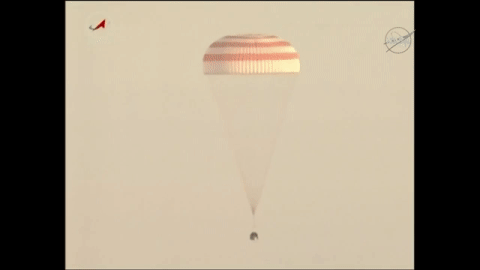
Russian search and recovery forces quickly arrived via a cluster of MI-8 helicopters after the soft landing to begin their normal procedures to extract the three Expedition 52 crew members from their cramped Soyuz descent module.
Soyuz Commander Yurchikhin in the center seat was hauled out first, followed by Fischer in the left side seat and lastly Whitson in the right seat. All 3 were placed on reclining seats sitting side by side and appeared quite well, conversing and speaking via satellite phones.
A group of Russian and US medical teams were on hand to check the astronauts and cosmonauts health and help the crewmates begin readapting to the tug of Earth’s gravity they have not experienced after many months of weightlessness in space.
Whitson’s final planned news conference from space with the media to sum up her experiences this past Wednesday had to be cancelled due to the catastrophic flooding events from Hurricane Harvey impacting Houston and elsewhere in Texas – including Mission Control which was forced to close multiple days.
The crews had bid their final farewells earlier and closed the hatches between the Soyuz and station at 2:40 p.m. EDT Saturday.
After conducting final spacecraft systems checks the trio unhooked the latches and undocked from the International Space Station at 5:58 p.m. EDT to begin their voyage home through the scorching heats of reentry in the Earth’s atmosphere that reached over 2500 degrees F (1400 degrees C) on the outside.
“While living and working aboard the world’s only orbiting laboratory, Whitson and Fischer contributed to hundreds of experiments in biology, biotechnology, physical science and Earth science, welcomed several cargo spacecraft delivering tons of supplies and research experiments, and conducted a combined six spacewalks to perform maintenance and upgrades to the station,” said NASA.
“Among their scientific exploits, Whitson and Fischer supported research into the physical changes to astronaut’s eyes caused by prolonged exposure to a microgravity environment. They also conducted a new lung tissue study that explored how stem cells work in the unique microgravity environment of the space station, which may pave the way for future stem cell research in space.”
“Additional research included an antibody investigation that could increase the effectiveness of chemotherapy drugs for cancer treatment, and the study of plant physiology and growth in space using an advanced plant habitat. NASA also attached the Cosmic Ray Energetics and Mass Investigation (ISS CREAM) on the outside of the space station in August, which is now observing cosmic rays coming from across the galaxy.”

ISS Expedition 53 began at the moment of undocking from the space station, now under the command of veteran NASA astronaut Randy Bresnik since the official change of command ceremony on Friday.
Along with his crewmates Sergey Ryazanskiy of Roscosmos and Paolo Nespoli of ESA (European Space Agency), the three-person crew will operate the station for the next 10 days until the imminent arrival of three new crew members.
The station will get back to a full complement of six crewmembers after the upcoming Sept. 12 launch and fast track 4 orbit 6 hour docking of NASA astronauts Mark Vande Hei and Joe Acaba of NASA and Alexander Misurkin of Roscosmos aboard the next Soyuz MS-06 spacecraft departing from the Baikonur Cosmodrome, Kazakhstan.
Meanwhile the next launch from the Kennedy Space Center is slated for this Thursday, Sept.7 is the SpaceX Falcon 9 carrying the USAF X-37B OTV-5 military mini-shuttle to low Earth orbit -detailed here.
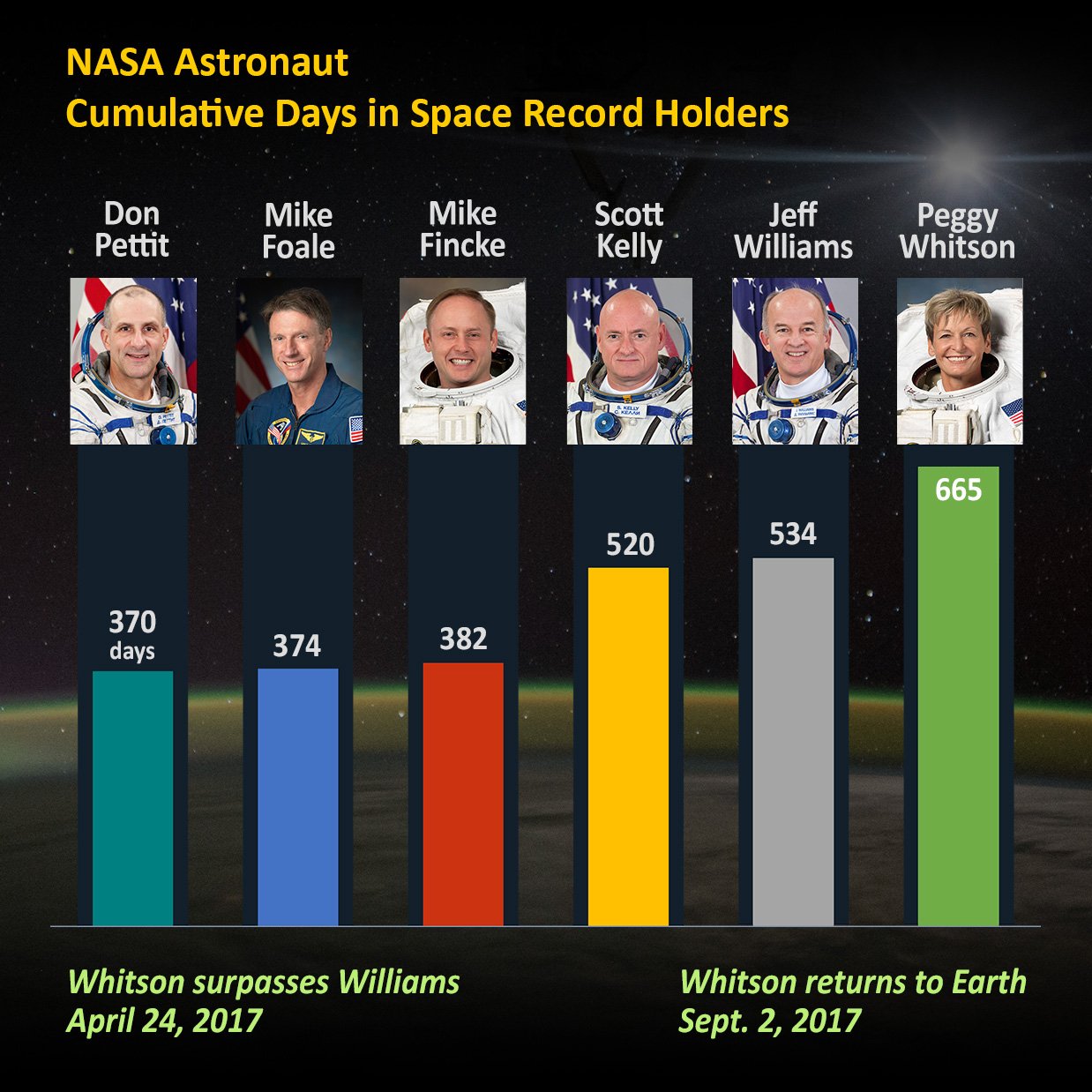
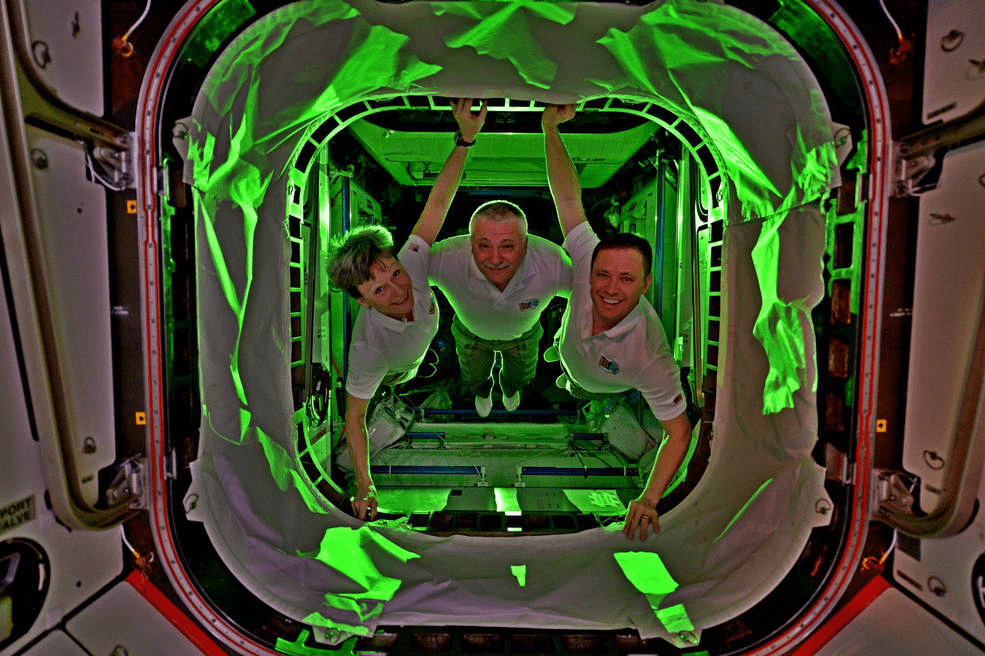
Watch for Ken’s continuing onsite X-37B OTV-5 and NASA mission reports direct from the Kennedy Space Center and Cape Canaveral Air Force Station, Florida.
Stay tuned here for Ken’s continuing Earth and Planetary science and human spaceflight news.
Ken Kremer
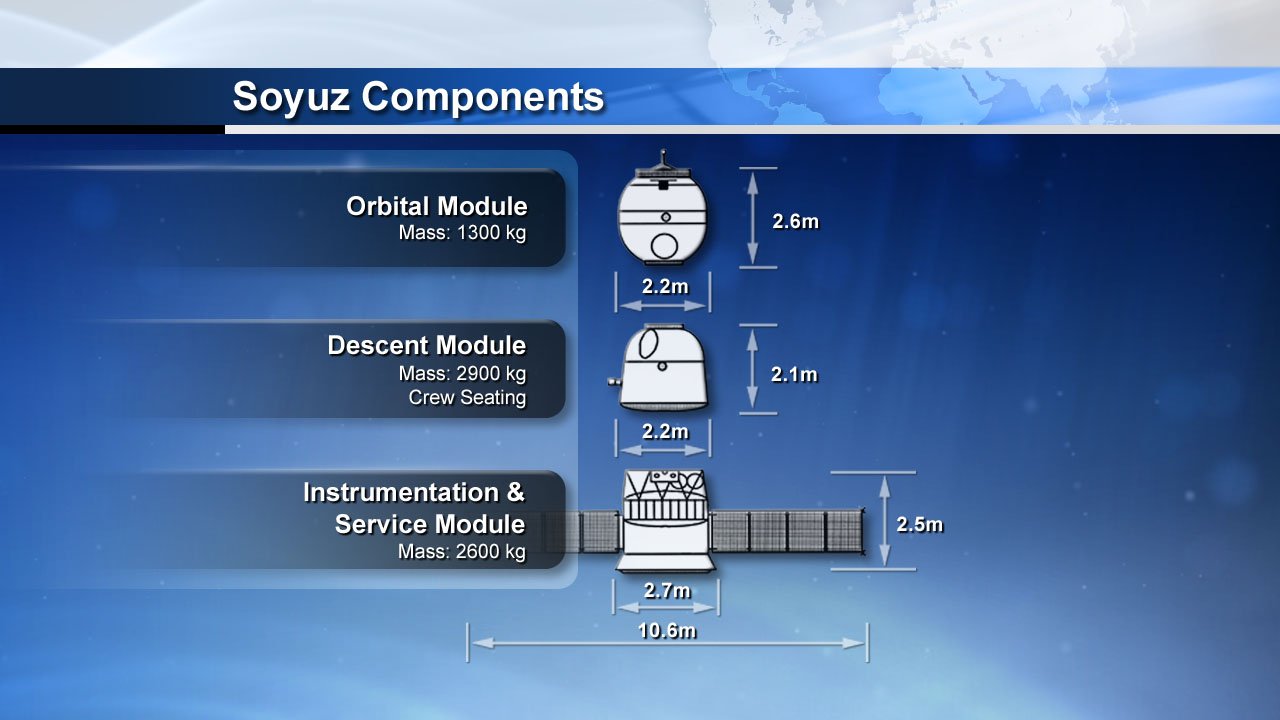
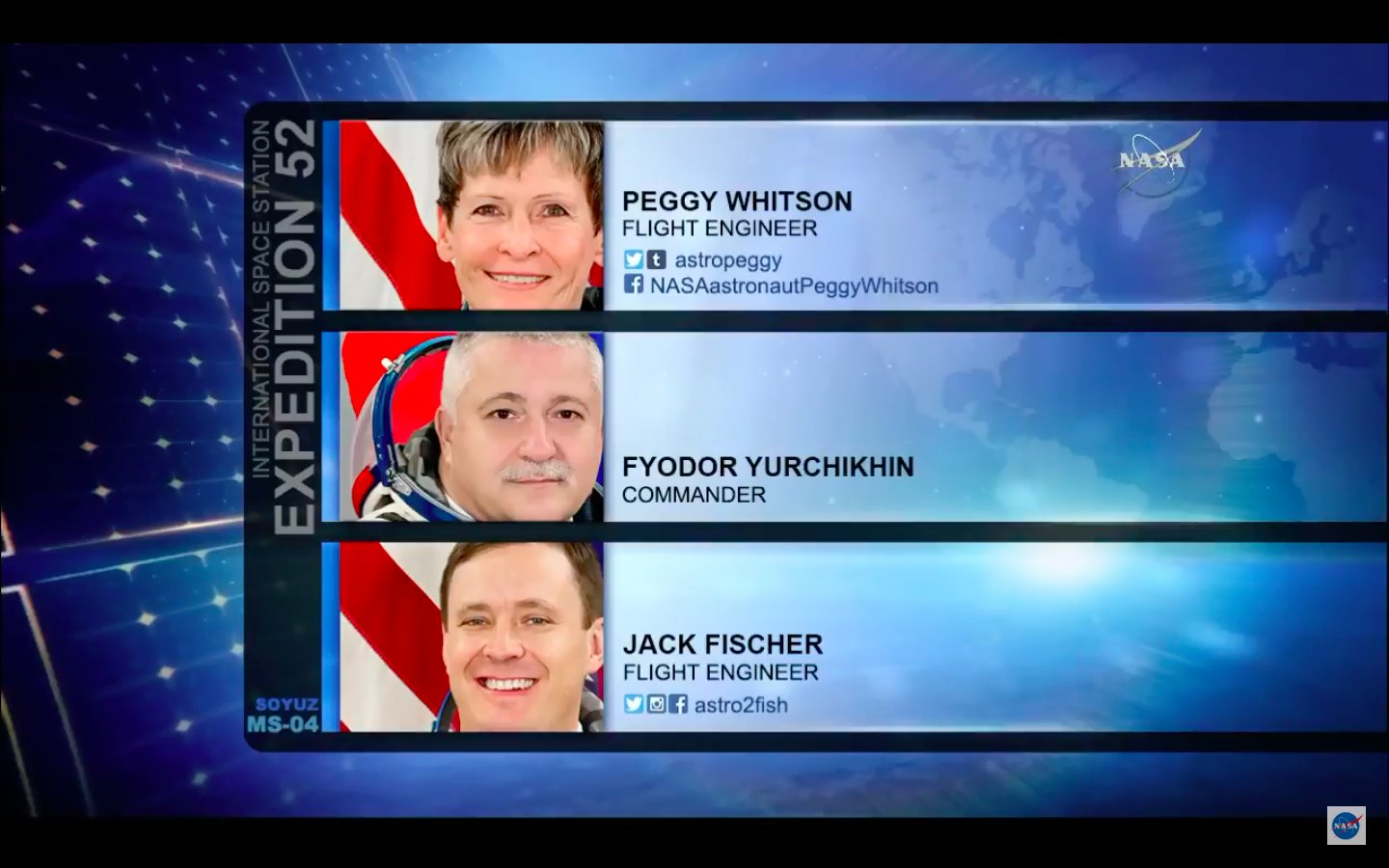

Researchers Tackle Question of How the Universe Became Filled With Light

In accordance with the Big Bang model of cosmology, shortly after the Universe came into being there was a period known as the “Dark Ages”. This occurred between 380,000 and 150 million years after the Big Bang, where most of the photons in the Universe were interacting with electrons and protons. As a result, the radiation of this period is undetectable by our current instruments – hence the name.
Astrophysicists and cosmologists have therefore been pondering how the Universe could go from being in this dark, cloudy state to one where it was filled with light. According to a new study by a team of researchers from the University of Iowa and the Harvard-Smithsonian Center for Astrophysics, it may be that black holes violently ejected matter from the early Universe, thus allowing light to escape.
Their study, titled “Resolving the X-ray emission from the Lyman continuum emitting galaxy Tol 1247-232“, recently appeared in the Monthly Notices of the Royal Astronomical Society. Led by Phillip Kaaret, a professor of Physics and Astronomy at the University of Iowa – and supported by an award from the Chandra X-ray Observatory – the research team arrived at this conclusion by observing a nearby galaxy from which ultraviolet light is escaping.
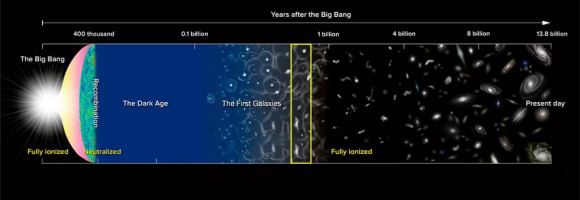
This galaxy, known as Tol 1247-232, is a small (and possibly elliptical) galaxy located 652 million light-years away, in the direction of the southern Hydra constellation. This galaxy is one of just nine in the local Universe (and one of only three galaxies close to the Milky Way) that has been shown to emit Lyman continuum photons – a type of radiation in the ultraviolet band.
Back in May of 2016, the team spotted a single X-ray source coming from a star-forming region in this galaxy, using the Chandra X-ray observatory. Based on their observations, they determined that it was not caused by the formation of a new star. For one, new stars do not experience sudden changes in brightness, as this x-ray source did. In addition, the radiation emitted by new stars does not come in the form of a point-like source.
Instead, they determined that what they were seeing had to be the result of a very small object, which left only one likely explanation: a black hole. As Philip Kaaret, a professor in the UI Department of Physics and Astronomy and the lead author on the study, explained:
“The observations show the presence of very bright X-ray sources that are likely accreting black holes. It’s possible the black hole is creating winds that help the ionizing radiation from the stars escape. Thus, black holes may have helped make the universe transparent.”
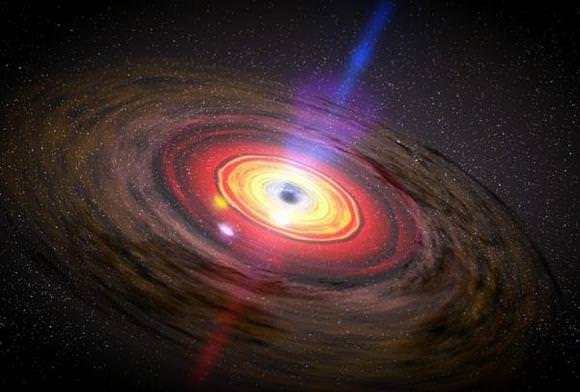
However, this also raised the question of how a black hole could be emitting matter. This is something that astrophysicists have puzzled over for quite some time. Whereas all black holes have tendency to consume all that is in their path, a small number of supermassive black holes (SMBHs) have been found to have high-speed jets of charged particles streaming from their cores.
These SMBHs are what power Active Galactic Nuclei, which are compact, bright regions that has been observed at the centers of particularly massive galaxies. At present, no one is certain how these SMBHs manage to fire off jets of hot matter. But it has been theorized that they could be caused by the accelerated rotational energy of the black holes themselves.
In keeping with this, the team considered the possibility that accreting X-ray sources could explain the escape of matter from a black hole. In other words, as a black hole’s intense gravity pulls matter inward, the black hole responds by spinning faster. As the hole’s gravitational pull increases, the speed creates energy, which inevitably causes charged particles to be pushed out. As Kaaret explained:
“As matter falls into a black hole, it starts to spin and the rapid rotation pushes some fraction of the matter out. They’re producing these strong winds that could be opening an escape route for ultraviolet light. That could be what happened with the early galaxies.”
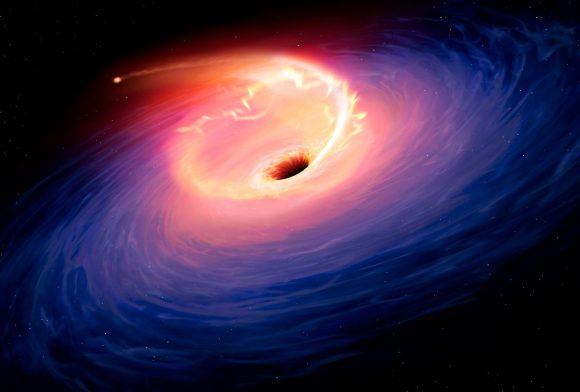
Taking this a step further, the team hypothesized that this could be what was responsible for light escaping the “Dark Ages”. Much like the jets of hot material being emitted by SMBHs today, similarly massive black holes in the early Universe could have sped up due to the accretion of matter, spewing out light from the cloudiness and allowing for the Universe to become a clear, bright place.
In the future, the UI team plans to study Tol 1247-232 in more detail and locate other nearby galaxies that are also emitting ultraviolet light. This will corroborate their theory that black holes could be responsible for the observed point source of high-energy X-rays. Combined with studies of the earliest periods of the Universe, it could also validate the theory that the “Dark Ages” ended thanks to the presence of black holes.
Further Reading: Iowa Now, Monthly Notices of the Royal Astronomical Society
Preparations for Deployment of InSight Lander to Mars are Ramping Up!
This summer has been a busy time for NASA. At present, the agency is making the final preparations for the Cassini mission‘s plunge into Saturn’s atmosphere, monitoring the large Near-Earth Asteroid that recently made a flyby of Earth, marking the 40th anniversary of the historic Voyager missions, and hosting the Summer of Mars at the Kennedy Space Center.
In addition to all that, engineers at the Jet Propulsion Laboratory in Pasadena, California, are busy preparing the Interior Exploration using Seismic Investigations, Geodesy and Heat Transport (InSight) Lander for its scheduled launch in 2018. Once deployed to Mars, the lander will reveal things about Mars’ interior geology and composition, shedding new light on the history of the Red Planet’s formation and evolution.
Originally scheduled for launch in 2016, the lander’s deployment was delayed due to the failure of a key component – a chamber that housed the Seismic Experiment for Interior Structure (SEIS). Having finished work on a new vacuum enclosure for this instrument, the technicians at Lockheed Martin Space Systems are back at work, assembling and testing the spacecraft in a clean room facility outside of Denver, Colorado.
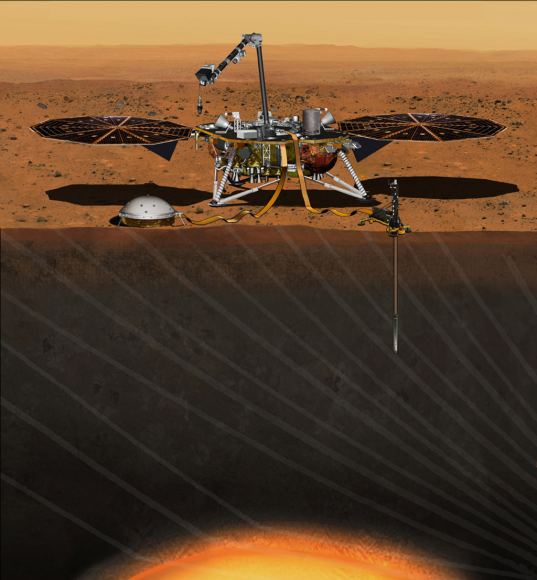
As Stu Spath, the spacecraft program manager at Lockheed Martin, said in a NASA press statement:
“Our team resumed system-level integration and test activities last month. The lander is completed and instruments have been integrated onto it so that we can complete the final spacecraft testing including acoustics, instrument deployments and thermal balance tests.”
Beyond the exploration of Mars, the InSight mission is also expected to reveal information about how all terrestrial (i.e. rocky) planets in the Solar System formed over four billion years ago. Mars is an especially opportune target for this type of research since it has been relatively inactive for the past three billion years. However, when the planet was still young, it underwent geological processes that were analogous to Earth’s.
In other words, because the interior of Mars has been subject to less convection over the past three billion years, it has likely preserved evidence about its early geological history better than Earth has. InSight will study this preserved history through a series of instruments that will measure the planet’s seismology, heat loss, and the state and nature of its core.
Once it reaches Mars, the stationary lander will set down near Mars’ equator and deploy its two fold-out solar cells, which kind of resemble large fans. Within a few weeks of making its landing, it will use a robotic arm to place its two main instruments onto the Martian surface – the aforementioned Seismic Experiment for Interior Structure (SEIS) and the Heat Flow and Physical Properties Probe (HP³).

The SEIS instrument – which was developed by France’s National Center for Space Studies (CNES) in collaboration with NASA and several European scientific institutions – has a sensitivity comparable to the best research seismometers here on Earth. This instrument will record seismic waves from “marsquakes” and meteor impacts, which will reveal things about the planet’s interior layers.
The HP³ probe, supplied by the German Aerospace Center (DLR), will use a Polish-made self-hammering mechanism to bury itself to a depth of 3 meters (10 feet) or more. As it descends, the probe will extend a tether that contains temperature sensors every ~10 cm, which measure the temperature profile of the subsurface. Combined with surface measurements, the instrument will determine the amount of heat escaping from the planet’s interior.
A third experiment, known as Rotation and Interior Structure Experiment (RISE), will also come into play. This instrument will use the lander’s X-band radio link to conduct Doppler tracking of the lander’s location, which will also allow it to measure variations in Mars’ rotation axis. Since these variations are primarily related to the size and state of Mars’ core, this experiment will shed light on one of Mars’ greatest mysteries.
Thanks to multiple missions that have studies Mars’ surface and atmosphere, scientists now know that roughly 4.2 billions of years ago, Mars lost its magnetic field. Because of this, Mars’ atmosphere was stripped away by solar wind during the next 500 million years. It is believed that it was this process that allowed the planet to go from being a warmer, wetter environment in the past to the cold, desiccated and irradiated place it is today.
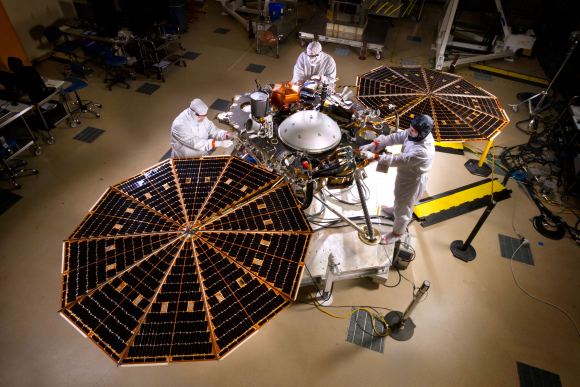
As such, determining the state of Mars’ core – i.e. whether it is solid or liquid, or differentiated between a solid outer core and liquid inner core – will allow scientists to gain a more comprehensive understanding of the planet’s geological history. It will also allow them to answer with a fair degree of certainty how and when Mars lost its magnetic field (and hence, its denser, warmer atmosphere).
The spacecraft’s science payload is also on track for next year’s launch. At present, the mission is scheduled to launch on May 5th, 2018, though this window could be moved to anytime within a five-week period. Regardless of what day it launches, mission planners indicate that the flight will reach Mars on November 26th, 2018 (the Monday after Thanksgiving).
As noted, the mission was originally planned to launch in March of 2016, but was canceled due to the presence of a leak in the special metal container designed to maintain near-vacuum conditions around the SEIS’s main sensors. Now that a redesigned vacuum vessel has been built and tested (and integrated with the SEIS) the spacecraft is ready for its new launch date.
Back in 2010, the InSight mission was selected from a total of 28 proposals, which were made as part of the twelfth round of selections for NASA’s Discovery Program. In contrast to New Frontiers or Flagship programs, Discovery missions are small-budget enterprises that aid in larger scientific pursuits. Along with two other finalists – the Titan Mare Explorer (TiME) and the Comet Hopper (CHopper) – InSight was awarded funding for further development.
Bruce Banerdt of NASA’s Jet Propulsion Laboratory is the Principle Investigator (PI) for the InSight mission.
Be sure to check out this video of the InSight mission (courtesy of NASA JPL) as well:
Further Reading: NASA JPL
Successful Static Fire Test Sets SpaceX on Target for Post Labor Day Launch of USAF X-37B Mini-Shuttle Sept. 7


PLAYALINDA BEACH/KENNEDY SPACE CENTER, FL – Following a successful engine test firing of the Falcon 9 first stage late Thursday afternoon (Aug. 30), SpaceX is targeting a post Labor Day launch of the U.S. Air Force’s unmanned X-37B reusable mini-shuttle – a secretive technology testing spaceplane.
The brief but critical hold down engine test took place at 4:30 p.m. EDT (2030 GMT) Aug. 31 at Launch Complex 39A on NASA’s Kennedy Space Center – as witnessed live by myself and several spectators from nearby Playalinda Beach Causeway. See my photos herein.
Both SpaceX and the Air Force announced the target launch date after completion of the Aug. 31 engine test.
“Static fire test complete,” SpaceX confirmed via Twitter soon after completion of the test, “—targeting Falcon 9 launch of OTV-5 from Pad 39A at @NASAKennedy on Thursday, September 7.”
The routinely done static fire test and involves conducting a full launch dress rehearsal and countdown culminating with igniting all nine Merlin 1D first stage engines during a hold down test at the pad.

The Merlin’s generated a combined 1.7 million pounds of thrust and a huge exhaust plume billowing into the air from the north side flame trench during the test, which lasted several seconds.
The plume soon swirled overhead and dissipated about 10 minutes later. Ignition was accompanied by a loud roar we heard screaming out from the pad in all directions. A number of folks driving to and from Playalinda Beach had stopped to ask me what I was photographing prior to the test and stayed to witness the event.
The rocket will be lowered rolled back horizontally on the transporter erector into the SpaceX processing hangar and the spaceplane housed inside the payload fairing will be integrated on top. The full stack will then be rolled back out and erected at pad 39A.
The hold down test firing is carried out without the payload bolted on top inside the nose cone to keep it safe in the event of a catastrophic failure event such as occurred precisely 1 year ago – when a Falcon 9 blew up during fueling for similar engine test with the AMOS-6 satellite resulting in destruction of the rocket as well as the customers satellite hardware at pad 40.
The exact launch time had been a closely guarded secret – until this evening.
The X-37B launch is apparently lunchtime Thursday, September 7 at 12 PM – 12:01 PM, according to a Facebook post by the U.S. Air Force Space Command and the 45th Space Wing at Patrick Air Force Base, Fla., posted Friday evening.
“The Air Force Rapid Capabilities Office is undergoing final launch preparations for the fifth mission of the X-37B Orbital Test Vehicle [OTV],” the Secretary of the Air Force Public Affairs announced. “The OTV is scheduled to launch on Sept. 7, 2017, onboard a SpaceX Falcon 9 launch vehicle.

The X-37B will be launched for the fifth time on the OTV-5 mission atop a SpaceX Falcon 9 on Sept. 7 from Launch Complex 39A on the Kennedy Space Center Florida into low Earth orbit.
The Boeing-built X-37B is processed for flight at KSC using refurbished NASA space shuttle processing facilities now dedicated to the reusable mini-shuttle, also known as the Orbital Test Vehicle (OTV). It launches vertically like a satellite but lands horizontally like an airplane and functions as a reliable and reusable space test platform for the U.S. Air Force.
But in another first, the OTV-5 mission marks the first launch of an X-37B spaceplane by SpaceX.
All four prior OTV missions launched on the United Launch Alliance Atlas V and ended with runway landings in either California of Florida.
“The many firsts on this mission make the upcoming OTV launch a milestone for the program,” said Randy Walden, the director of the Air Force Rapid Capabilities Office.
“It is our goal to continue advancing the X-37B OTV so it can more fully support the growing space community.”
The OTV-4 mission launched on the ULA Atlas V on May 20, 2015 from Space Launch Complex-41, on Cape Canaveral Air Force Station.

After spending a record setting 718 days in orbit, the X-37B program completed its fourth mission with a runway landing back at KSC’s Shuttle Landing Facility on May 7, 2017. Overall OTV’s have spent a total of 2,085 days in orbit.

Playalinda Beach is located just 4 miles north of pad 39A and offers an excellent launch viewing location for the OTV-5 mission – if officials allow it to be open to the public.
The engine test comes at the end of a very busy August with a trio of Florida Space Coast launches plus a Total Solar ‘Eclipse Across America’ sandwiched in between.
Also noteworthy is that OTV-5 will be launched into a higher inclination orbit compared to the prior four, serve as a technology testbed for multiple research payloads and will also somehow deploy several small satellites or cubesats.
“The fifth OTV mission continues to advance the X-37B’s performance and flexibility as a space technology demonstrator and host platform for experimental payloads,” the USAF said in a statement.
“This mission carries small satellite ride shares and will demonstrate greater opportunities for rapid space access and on-orbit testing of emerging space technologies. Building upon the fourth mission and previous collaboration with experiment partners, this mission will host the Air Force Research Laboratory Advanced Structurally Embedded Thermal Spreader payload to test experimental electronics and oscillating heat pipe technologies in the long duration space environment.”

SpaceX will also attempt another land landing of the 156-foot-tall Falcon 9 first stage back at Landing Zone-1 (LZ-1) at the Cape.
The Falcon 9 first stage is equipped with a quartet of landing legs and grid fins to enable the rocket recycling plan.
“The fifth OTV mission will also be launched into, and landed from, a higher inclination orbit than prior missions to further expand the X-37B’s orbital envelope.”
The daylight first stage precision guided landing should offer spectators a thrilling up close view of the rocket reusability technology envisioned by SpaceX’s billionaire CEO Elon Musk to drastically slash the high costs of launching to space.
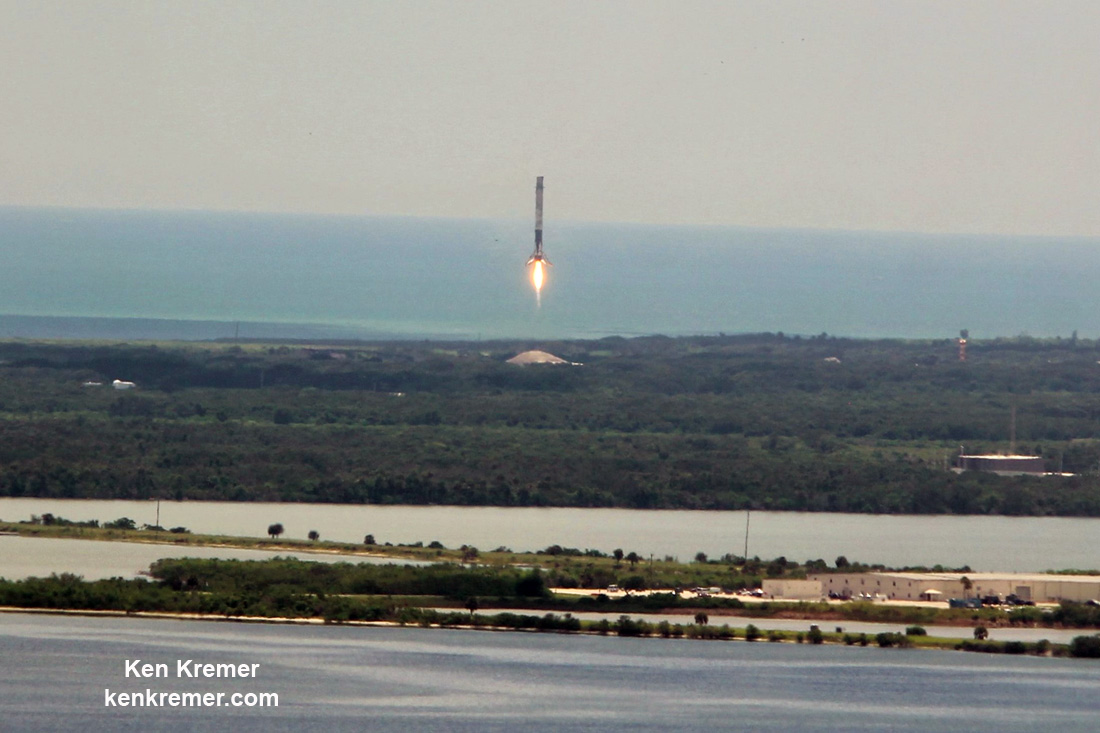
The 11,000 pound (4990 kg) state-of -the art reusable OTV space plane is about a quarter the size of a NASA space shuttle. The vehicle measures 29 ft 3 in (8.9 m) in length with a wingspan of 14 ft 11 in (4.5 m).
The X-37B was originally developed by NASA but was transferred to the Defense Advanced Research Projects Agency (DARPA) in 2004.
Since then most but not all of the spaceplane’s goals have been shrouded in secrecy.

Watch for Ken’s continuing onsite X-37B OTV-5 and NASA mission reports direct from the Kennedy Space Center and Cape Canaveral Air Force Station, Florida.
Stay tuned here for Ken’s continuing Earth and Planetary science and human spaceflight news.

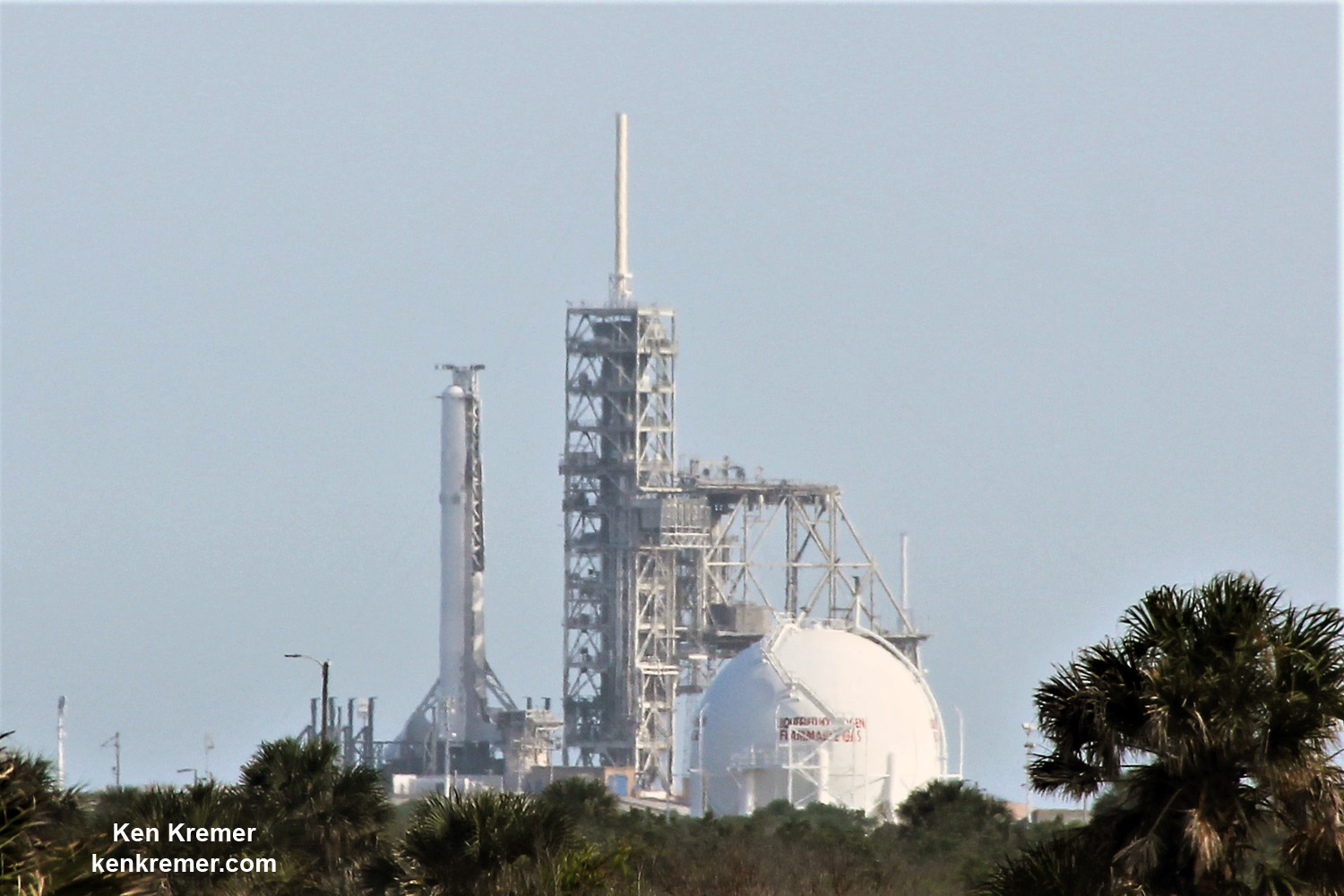
Ultraviolet Light Could Point the Way To Life Throughout the Universe

Ultraviolet light is what you might call a controversial type of radiation. On the one hand, overexposure can lead to sunburn, an increased risk of skin cancer, and damage to a person’s eyesight and immune system. On the other hand, it also has some tremendous health benefits, which includes promoting stress relief and stimulating the body’s natural production of vitamin D, seratonin, and melanin.
And according to a new study from a team from Harvard University and the Harvard-Smithsonian Center for Astrophysics (CfA), ultraviolet radiation may even have played a critical role in the emergence of life here on Earth. As such, determining how much UV radiation is produced by other types of stars could be one of the keys to finding evidence of life any planets that orbit them.
The study, titled “The Surface UV Environment on Planets Orbiting M Dwarfs: Implications for Prebiotic Chemistry and the Need for Experimental Follow-up“, recently appeared in The Astrophysical Journal. Led by Sukrit Ranjan, a visiting postdoctoral researcher at the CfA, the team focused on M-type (red dwarf) stars to determine if this class of star produces enough UV radiation to kick-start the biological processes necessary for life to emerge.

Recent studies have indicated that UV radiation may be necessary for the formation of ribonucleic acid (RNA), which is necessary for all forms of life as we know it. And given the rate at which rocky planets have been discovered around red dwarf stars of late (exampled include Proxima b, LHS 1140b, and the seven planets of the TRAPPIST-1 system), how much UV radiation red dwarfs give off could be central to determining exoplanet habitability.
As Dr. Ranjan explained in a CfA press release:
“It would be like having a pile of wood and kindling and wanting to light a fire, but not having a match. Our research shows that the right amount of UV light might be one of the matches that gets life as we know it to ignite.”
For the sake of their study, the team created radiative transfer models of red dwarf stars. They then sought to determine if the UV environment on prebiotic Earth-analog planets which orbited them would be sufficient to stimulate the photoprocesses that would lead to the formation of RNA. From this, they calculated that planets orbiting M-dwarf stars would have access to 100–1000 times less bioactive UV radiation than a young Earth.
As a result, the chemistry that depends on UV light to turn chemical elements and prebiotic conditions into biological organisms would likely shut down. Alternately, the team estimated that even if this chemistry was able to proceed under a diminished level of UV radiation, it would operate at a much slower rate than it did on Earth billions of years ago.

As Robin Wordsworth – an assistant professor at the Harvard School of Engineering and Applied Science and a co-author on the study – explained, this is not necessarily bad news as far as questions of habitability go. “It may be a matter of finding the sweet spot,” he said. “There needs to be enough ultraviolet light to trigger the formation of life, but not so much that it erodes and removes the planet’s atmosphere.”
Previous studies have shown that even calm red dwarfs experience dramatic flares that periodically bombard their planets with bursts UV energy. While this was considered to be something hazardous, which could strip orbiting planets of their atmospheres and irradiate life, it is possible that such flares could compensate for the lower levels of UV being steadily produced by the star.
This news also comes on the heels of a study that indicated how the outer planets of the TRAPPIST-1 system (including the three located within its habitable zone) might still have plenty of water of their surfaces. Here too, the key was UV radiation, where the team responsible for the study monitored the TRAPPIST-1 planets for signs of hydrogen loss from their atmospheres (a sign of photodissociation).
This research also calls to mind a recent study led by Professor Avi Loeb, the Chair of the astronomy department at Harvard University, Director of the Institute for Theory and Computation, and also a member of the CfA. Titled, “Relative Likelihood for Life as a Function of Cosmic Time“, Loeb and his team concluded that red dwarf stars are the most likely to give rise to life because of their low mass and extreme longevity.
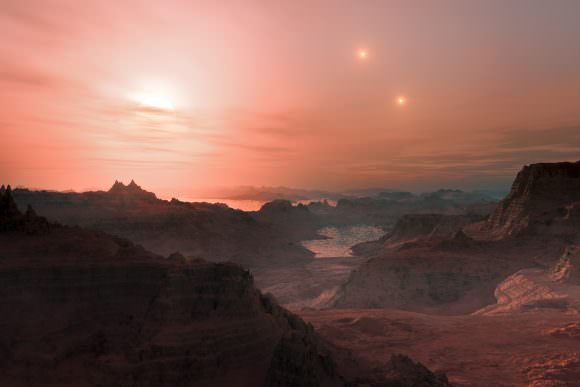
Compared to higher-mass stars that have shorter life spans, red dwarf stars are likely to remain in their main sequence for as long as six to twelve trillion years. Hence, red dwarf stars would certainly be around long enough to accommodate even a vastly decelerated rate of organic evolution. In this respect, this latest study might even be considered a possible resolution for the Fermi Paradox – Where are all the aliens? They’re still evolving!
But as Dimitar Sasselov – the Phillips Professor of Astronomy at Harvard, the Director of the Origins of Life Initiative and a co-author on the paper – indicated, there are still many unanswered questions:
“We still have a lot of work to do in the laboratory and elsewhere to determine how factors, including UV, play into the question of life. Also, we need to determine whether life can form at much lower UV levels than we experience here on Earth.”
As always, scientists are forced to work with a limited frame of reference when it comes to assessing the habitability of other planets. To our knowledge, life exists on only on planet (i.e. Earth), which naturally influences our understanding of where and under what conditions life can thrive. And despite ongoing research, the question of how life emerged on Earth is still something of a mystery.
If life should be found on a planet orbiting a red dwarf, or in extreme environments we thought were uninhabitable, it would suggest that life can emerge and evolve in conditions that are very different from those of Earth. In the coming years, next-generation missions like the James Webb Space Telescope are the Giant Magellan Telescope are expected to reveal more about distant stars and their systems of planets.
The payoff of this research is likely to include new insights into where life can emerge and the conditions under which it can thrive.
Further Reading: CfA, The Astrophysical Journal
The Crux Constellation
Welcome to another edition of Constellation Friday! Today, in honor of the late and great Tammy Plotner, we take a look at the “Southern Cross” – the Crux constellation. Enjoy!
In the 2nd century CE, Greek-Egyptian astronomer Claudius Ptolemaeus (aka. Ptolemy) compiled a list of all the then-known 48 constellations. This treatise, known as the Almagest, would be used by medieval European and Islamic scholars for over a thousand years to come, effectively becoming astrological and astronomical canon until the early Modern Age.
One of these constellations is known as Crux, a small constellation located in the southern skies. Despite its size, it is one of the most well-known constellations in the southern hemisphere due to its distinctive cross-shape. Today, it has gone on to become one of the 88 modern constellations currently recognized by the International Astronomical Union (IAU).
Name and Meaning:
For the people of the Southern Hemisphere, the Crux constellation has a great deal of cultural significance. The Incas knew the constellation as Chakana (Quechua for “the stair”), and a stone image of the stars was found in Machu Picchu, Peru. To the Maori, the constellation was known as Te Punga, or “the anchor”, due to the important role it played in maritime navigation.
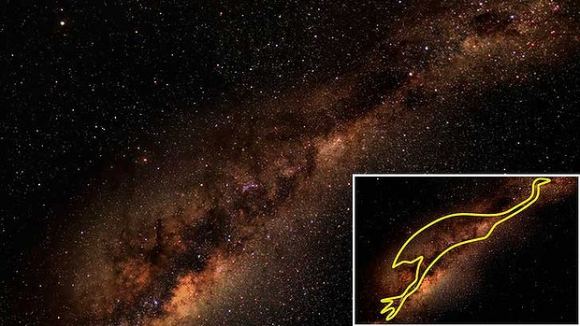
To the Aborigines of Australia, the cross and the Coalsack Nebula together represented the head of the Emu in the Sky. This mythical bird is associated with several Aborigine creation myths and is one of the most important constellations in their astronomical traditions. Because of this significance, the Southern Cross is represented on the flags of Australia, Papua New Guinea, New Zealand Brazil, and Brazil.
The first recorded instance of Crux being named is believed to have occurred in 1455, when Venetian navigator Alvise Cadamosto made note of an asterism in the southern skies that he called carr dell’ostro (“southern chariot”). However, historians generally credit Portugese astronomer Joao Faras with the discovery, which occurred in 1500 when he spotted it from Brazil and named it “Las Guardas” (“the guards”).
By the late 16th century, Crux began to be depicted as a separate constellation on celestial globes and maps. In these and subsequent maps, the name Crux was used (Latin for “Cross”), referring to the constellation’s distinct shape.
History of Observation:
Crux was originally considered to be part of Centaurus, but as the precession of the equinoxes gradually lowered these stars below the European horizon, they were lost sight of, and so was the memory of these stars. At one time, around 1000 BCE, the stars of Crux were visible to the northern hemisphere, but by 400 CE they had slipped below the horizon for most populated areas.
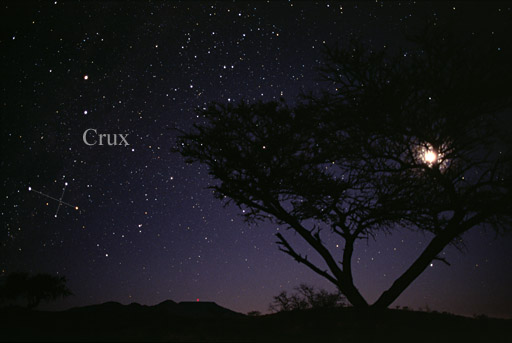
Even though it was originally plotted on Ptolemy’s Almagest, it first appeared as “Crux” on the charts of Petrus Plancius and Jodocus Hondius in 1598 and 1600 – both navigators. It is known that Amerigo Vespucci mapped the stars of Crux on his expedition to South America in 1501, and with good reason!
Two of the stars of Crux (Alpha and Gamma, Acrux and Gacrux respectively) are commonly used to mark due south. Following the line defined by the two stars for approximately 4.5 times the distance between them leads to a point close to the Southern Celestial Pole. A definite point needed for navigation! In 1920, Crux was included among the 88 modern constellations recognized by the IAU.
Notable Objects:
Of the major stars in Crux, Alpha Crucis (Acrux) is the brightest, and the 12th brightest star in the night sky. It is located approximately 320 light years away and is a multiple star system composed of Alpha-1 Crucis (a B class subgiant) and Alpha-2 Crucis (a B class dwarf). Both stars are very hot and their respective luminosities are 25,000 and 16,000 times that of the Sun.
Beta Crucis (Becrux, or Mimosa) is the second brightest star of the Southern Cross and the 20th brightest star in the night sky. It is approximately 350 light years distant, is classified as a Beta Cephei variable, and is a spectroscopic binary composed of two stars that are about 8 AU apart and orbit each other every five years. The name Mimosa refers to its color (blue-hued).
Gamma Crucis (Gacrux) is a red giant that is approximately 88 light years distant from Earth. It is the third brightest star in the Crux constellation and the 26th brightest star in the sky. Located about 400 light years distant from Earth, this binary star is composed of a M4 red dwarf star and a A3 white dwarf star.
Crux is also associated with several Deep Sky Objects, the most notable of which is the Coalsack Nebula. This object is easily seen as a dark patch in the southern region of the Milky Way (hence the name) and crosses into the neighboring constellations of Centaurus and Musca. It is located about 600 light years from Earth and is between 30 and 35 light years in radius. In Aboriginal astronomy, the nebula represents the head of the Emu.
Then there’s the Kappa Crucis Cluster (aka. the “Jewel Box” or “Herschel’s Jewel Box”), an open star cluster that is located approximately 6,440 light years from Earth. It contains roughly 100 stars and is one of the youngest clusters ever discovered (only 14 million years old). To the naked eye, the cluster appears like a star near Beta Crucis.
Finding Crux:
The constellation itself consists of four bright, main stars and 19 stars which have Bayer/Flamsteed designations. It is bordered by the constellations of Centaurus and Musca. At present, Crux is visible at latitudes between +20° and -90°. While it is fairly circumpolar for the southern hemisphere, it is best seen a culmination during the month of May.
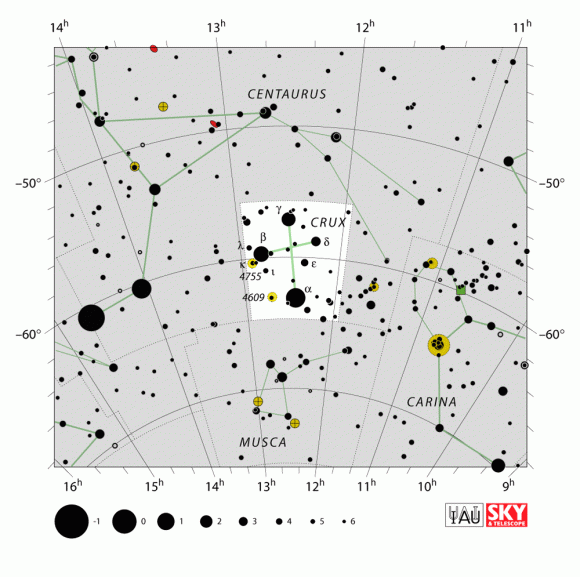
Now, let’s take out binoculars and examine its stars, started with Alpha Crucis, the “a” shape on our map. Its proper name is Acrux and it is the twelfth brightest star in the night sky. If you switch your binoculars out for a telescope, you’ll find that 321 light year distant Acrux is also a binary star, with components separated by about 4 arc seconds and around one half stellar magnitude difference in brightness.
The brighter of the two, A1 is itself a spectroscopic binary star – with a companion that orbits no further away than our own Earth, yet is around 14 times larger than our own Sun! Needless to say, there’s a very good chance this star may one day go supernova. While you’re there, take a look an addition 90 arc seconds away for a third star. While it may just be an optical companion to the Acrux system, it does share the same proper motion!
Back to binoculars an on to Beta Crucis – the “B” shape on the map. Mimosa is located about 353 light years away from our solar system and it is also a spectroscopic binary star. This magnificent blue/white giant star is tied at number 19 as one of the brightest stars in the sky, and if we could put it side by side with our Sun it would be 3000 times brighter. Mimosa is also a multiply-periodic Beta-Cephi type star, too, fluxing by about 1/10 of a magnitude in as little as hours. What’s going on? Inside Beta Crucis the iron content is only about half that of Sol and it’s nearing the end of its hydrogen-fusing stage. When the iron core develops? Watch out! It’s supernova time….
Now hang on to your binoculars and head north for Gamma Crucis, the “Y” shape on the map. Gacrux, is a red giant star approximately 88 light-years away from Earth. Did you notice its optical companion about 2 arc minutes away at an angle of 128 degrees from the main star? While the two look close together in the sky, the secondary star is actually 400 light years away! Gacrux shows its beautiful orange coloring to prove it has evolved off of the main sequence to become a red giant star, and it may even be evolving past the helium-burning stage.
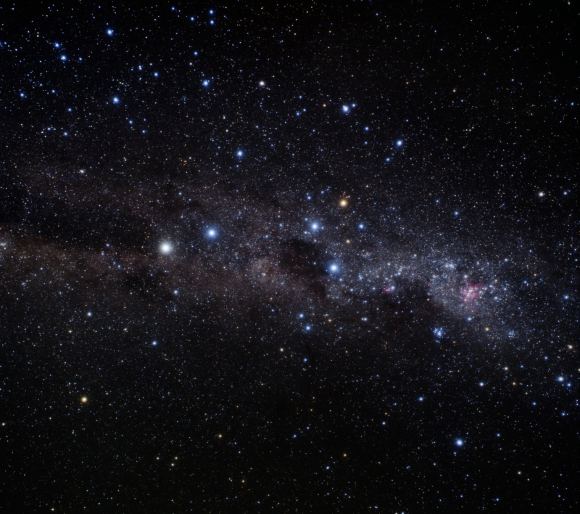
Move on now to Delta Crucis – the figure “8” on our map. Decrux is a red giant star located about 360 light years away from our vantage point. Delta Crucis is also Beta Cephei variable and changes its brightness just a tiny bit over a period of about an hour and 20 minutes. Another cool factoid about Delta Crucis is that it’s a fast rotator – spinning at a speed of at least 194 kilometers per second at the equator and making a full rotation in about 32 hours.
This massive star also produces a massive stellar wind, shooting off 1000 times more material than our own Sun every second of every day! Or try R Crucis… It’s also a Beta-Cephi type variable star, but it changes by nearly a full stellar magnitude in just a little over five days!
Keep your binoculars handy and head back to Beta and sweep south a degree and a half for the Kappa Crucis star cluster. This beautiful galactic cluster of stars commonly known as the Jewel Box (NGC 4755). After you see its glittering collection of multi-colored stars, you’ll understand how it got its name! It is one of the youngest clusters, perhaps only a few million years old.
Kappa Crucis is also right on the edge of a dark void in the sky called the “Coal Sack”. While you’re looking around, you’ll notice that there seem to be very few stars in this area. That’s because they are being blocked by a dark nebula! The Coal Sack is a large, dark dust cloud about 500 light years away and it’s blocking out the light from stars which lie beyond it. The few stars you do see are in front of the cloud and much nearer to the Earth.
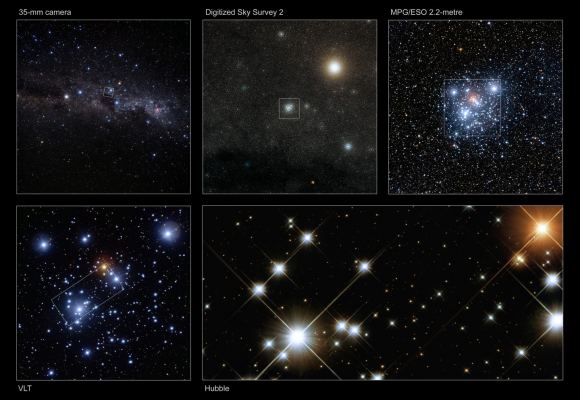
Now it’s telescope time. Head to Alpha Crucis and slightly less than 2 degrees east for NGC4609. Also on the edge of the Coalsack, this large, fairly condensed open cluster contains about 40 members and they are well spread across the sky. The pattern somewhat resembles the constellation of Orion (in the imagination, of course!). Mark you observing notes for Caldwell 98. Next stop? Back to Delta and less than 3 degrees south/southwest for NGC4103, another open cluster on the edge of night. With a little bit of imagination, this grouping of stars could appear to look like a celestial water tower!
We have written many interesting articles about the constellation here at Universe Today. Here is What Are The Constellations?, What Is The Zodiac?, and Zodiac Signs And Their Dates.
Be sure to check out The Messier Catalog while you’re at it!
For more information, check out the IAUs list of Constellations, and the Students for the Exploration and Development of Space page on Canes Venatici and Constellation Families.
Sources:
Hubble Spots First Indications of Water on TRAPPIST-1s Planets
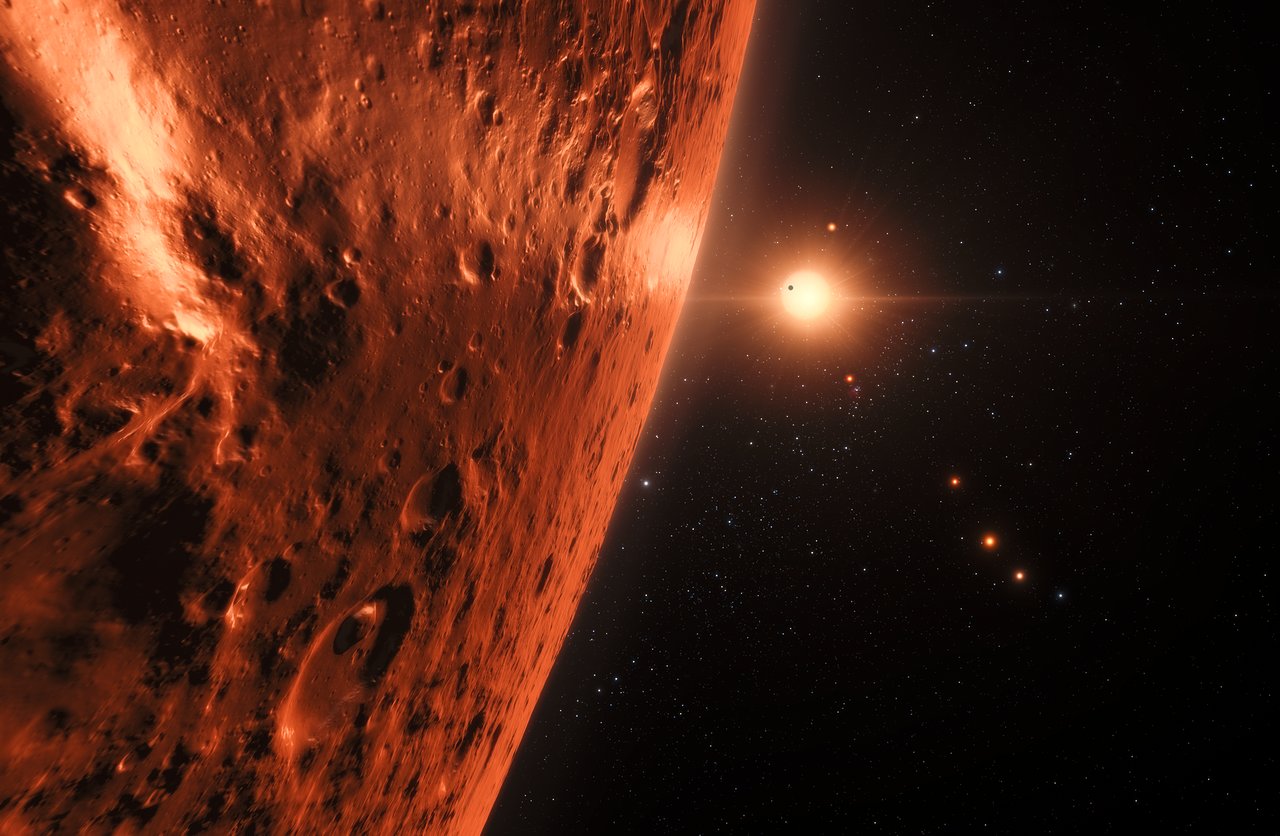
In February of 2017, astronomers from the European Southern Observatory (ESO) announced the discovery of seven rocky planets around the nearby star of TRAPPIST-1. Not only was this the largest number of Earth-like planets discovered in a single star system to date, the news was also bolstered by the fact that three of these planets were found to orbit within the star’s habitable zone.
Since that time, multiple studies have been conducted to ascertain the likelihood that these planets are actually habitable. Thanks to an international team of scientists who used the Hubble Space Telescope to study the system’s planets, we now have the first clues as to whether or not water (a key ingredient
Continue reading “Hubble Spots First Indications of Water on TRAPPIST-1s Planets”
NASA’s Plan to Explore Venus with a “SteamPunk” Rover
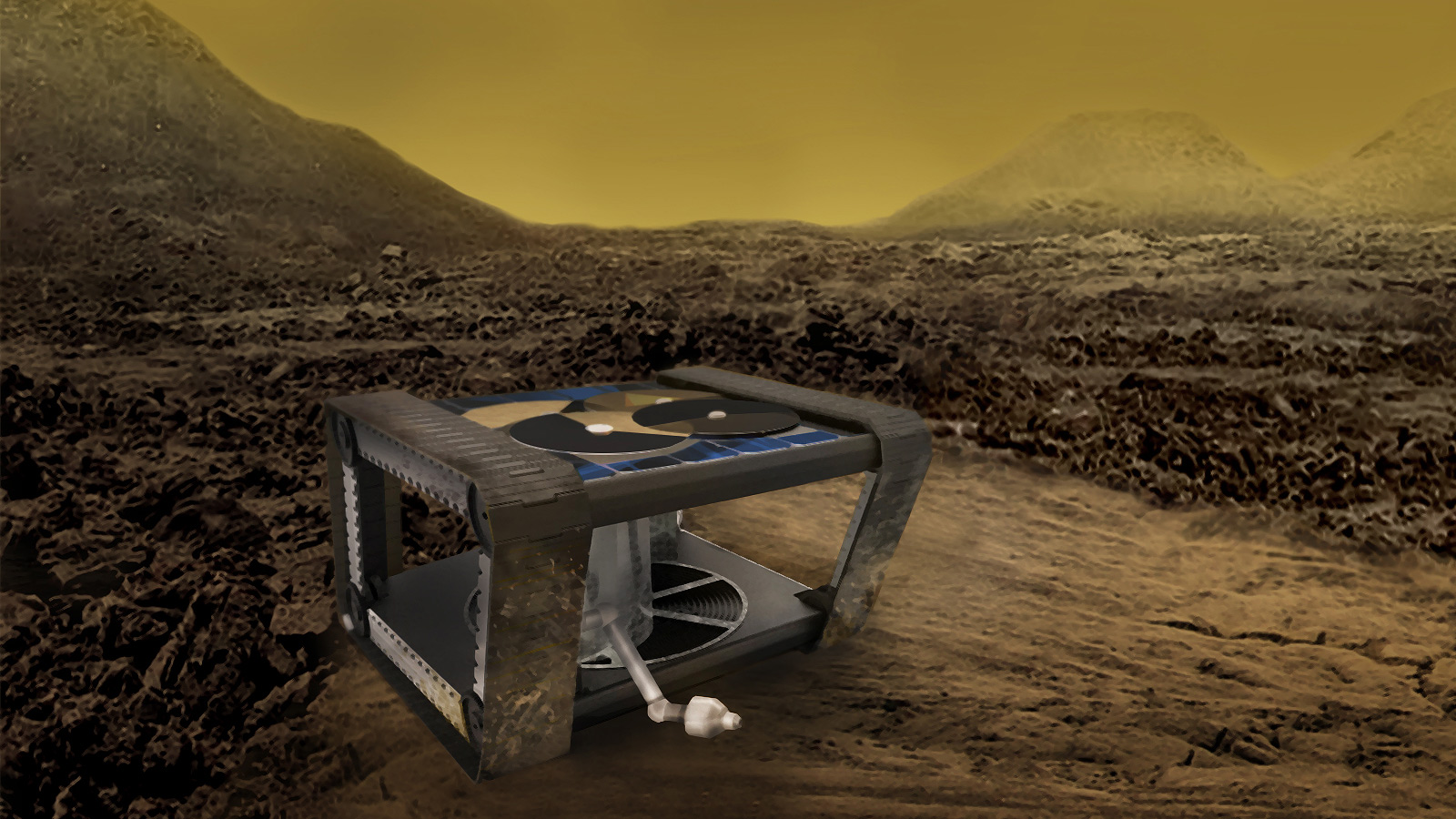
Venus is one hellish place! Aside from surface temperatures hot enough to melt lead – as high as 737 K (462 °C; 864 °F) – there’s also the sulfuric acid droplets and extreme pressure conditions (92 times that of Earth’s) to contend with! Because of these hostile conditions, exploring Venus’ surface and atmosphere has been an ongoing and significant challenge for space agencies.
Hence why NASA’s Jet Propulsion Laboratory (JPL) is looking at some truly innovative and unconventional ideas for future missions to Venus. One of them is the second-generation concept known as the Automaton Rover for Extreme Environments (AREE). By relying on clockwork mechanisms instead of electronics, this rover will be able to function on the surface of Venus for longer periods of time.
If deployed, this rover will build upon the accomplishments of the Soviet-era Venera and Vega programs, which were the only missions to ever successfully land on Venus’ hostile surface. Unfortunately, those probes that actually made it to the surface and landed safely only survived for 23 to 127 minutes before their electronics failed and they could no longer send back information.
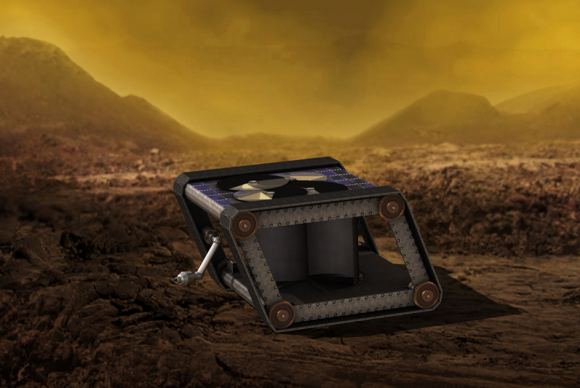
This is the reality of operating machines on Venus, where the extreme temperatures will melt outer casings and sulfuric acid will corrode electronics. Hence why Jonathan Sauder, a mechatronics engineer at JPL, began tinkering with the idea of a clockwork rover. In this respect, he was inspired by mechanical computers, a time-honored concept that relies on levers and gears to make calculations rather than electronic components.
The earliest known example is the Antikythera mechanism, a device built by the ancient Greeks to predict astronomical phenomena. In 1642, French mathematician Blaise Pascal created what is considered to be the first mechanical calculator. Alternately known as the “Arithmetic Machine” and “Pascal Calculator“, Pascal is said to have invented this device to help his father reorganize the tax revenues for their province.
In the early 19th century, French weaver and merchant Joseph Marie Jacqaurd created the “Jacquard Loom“, a machine that relied on punch cards to turn out textiles in various patterns. And in 1822, English mathematician Charles Babbage began work on his “Difference Engine“, a machine that would automatically perform calculations and create error-free tables.
From these and other examples, Sauders and his team saw a possible solution to surviving Venus’ atmosphere. In essence, they proposed reverting back to an ancient practice of using analog gears to build a robot that could survive the most extreme environment within the Solar System. By relying on an entirely mechanical design and hardened metal structure, the AREE could theoretically survive for months or longer on Venus.
As Sauder explained in a recent NASA press statement:
“Venus is too inhospitable for kind of complex control systems you have on a Mars rover. But with a fully mechanical rover, you might be able to survive as long as a year.”
As a result, it would be able to send back far more information about Venus’ surface conditions and geological processes, which have remained something of a mystery for decades. These include (but are not limited to) why Venus has fewer volcanoes than Earth today – despite widespread evidence of volcanic activity early in its history – and the strange absorption patterns that have been seen in its upper atmosphere.
Sauder first proposed the concept back in 2015. In 2016, the concept was assessed as part of the NASA Innovative Advanced Concepts (NIAC) program, which opens itself to submissions every year for mission ideas. Along with twelve other proposals, AREE was selected for Phase I development and Sauder and his team were awarded $100,000 for a nine month period to assess the feasibility of their concept.
Beyond its processors, AREE would also rely on analog components for power. This would be necessary since solar cells cannot receive sunlight in Venus’ dense atmosphere. And a Multi-Mission Radioisotope Thermoelectric Generator (MMRTG), which the Curiosity rover relies on for power, has complex electrical systems that would likely break down in Venus’s atmosphere.
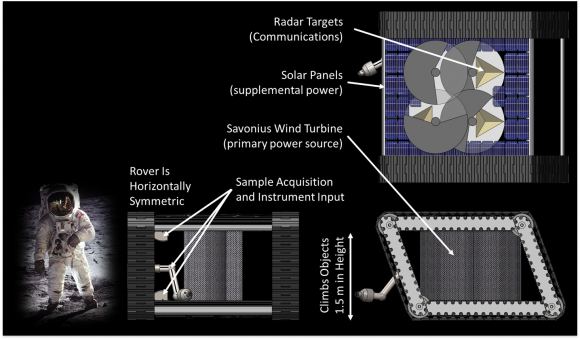
Mobility is another challenge, and one which Sauder and his team also looked to an old idea to address. Basically, Venus’ rocky, craters surface is full of unknowns and will likely be very difficult to navigate. Sauder and his team therefore looked to World War I-era tanks treads as a solution. These vehicles were slow and lumbering, but were designed to traverse the difficult terrain of No Man’s Land, which was characterized by trenches and craters.
Originally, Sauder’s was inspired by Dutch artist Theo Jansen’s “Strandbeests“, a series of wood and canvas “robots” that relied on wind-driven gears to power their legs and walk along beaches. In the same vein, Sauder considered building a spider-like robot that used spindly legs to get around. However, this seemed too unstable for Venus’ rocky terrain, and treads were favored instead.
For communications, AREE would rely on another time-honored technology – Morse Code. This would involve an orbiting spacecraft pinging the rover using radar, while the rover would communicate by reflecting radar signals off of properly-shaped targets. Thanks to a rotating shutter, which would be positioned in front of the radar target, the rover would be able to turn the signal on and off to simulate dots and dashes.
If successful, this rover would be the first mission since the Cold War to explore the surface of Venus. As Evan Hilgemann, a JPL engineer working on high temperature designs for AREE, explained:
“When you think of something as extreme as Venus, you want to think really out there. It’s an environment we don’t know much about beyond what we’ve seen in Soviet-era images.”
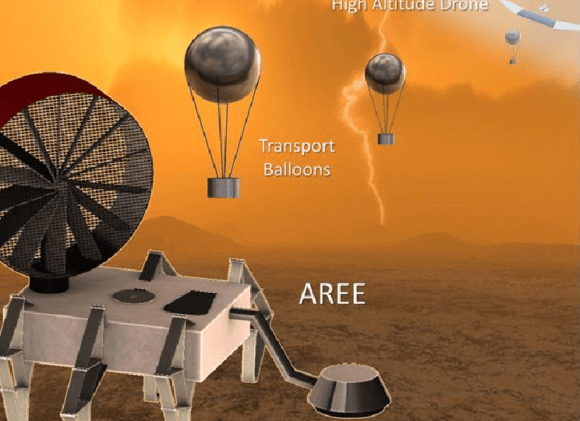
Beyond Venus, such a probe would also be useful for exploring hostile environments on Mercury, within Jupiter’s radiation belt, interiors of gas giants, within volcanoes, and perhaps even the mantle of Earth. The AREE rover is currently in its second phase of NIAC development, and the team is working towards refining and prototyping parts of the concept.
In the future, Sauder and his team hope to expand the rover’s capabilities further and maybe equip it with a drill to collect geological samples. With the ability to function on the planet for up to a year, and the prospect of actual samples being obtained from the surface, scientists will be able to learn a great deal about Earth’s “Sister Planet”. This, in turn, could teach us much about the formation and evolution of rocky planets in our Solar System.
Be sure to check out this video of AREE concept, which features the team’s original spider-leg design:
Breakthrough Detects Repeating Fast Radio Bursts Coming from Distant Galaxy
In July of 2015, Russian billionaire Yuri Milner announced the creation of Breakthrough Listen, a decade-long project that would conduct the largest survey to date for signs of extra-terrestrial communications (ETI). As part of his non-profit organization, Breakthrough Initiatives, this survey would rely on the latest in instrumentation and software to observe the 1,000,000 closest stars and 100 closest galaxies.
Using the Green Bank Radio Telescope in West Virginia, the Listen science team at UC Berkeley has been observing distant stars for over a year now. And less than a week ago, they observed 15 Fast Radio Bursts (FRBs) coming from a dwarf galaxy located three billion light-years away. According to a study that described their findings, this was the first time that repeating FRBs have been seen coming from this source at these frequencies.
The team’s study, titled “FRB 121102: Detection at 4 – 8 GHz band with Breakthrough Listen backend at Green Bank“, was recently published in The Astronomers Telegraph. Led by Dr. Vishal Gajjar – a postdoctoral researcher at the University of California, Berkeley – the team conducted a detailed survey of FRB 121102. This repeating FRB source is located in a dwarf galaxy in Auriga constellation, some 3 billion light-years from Earth.
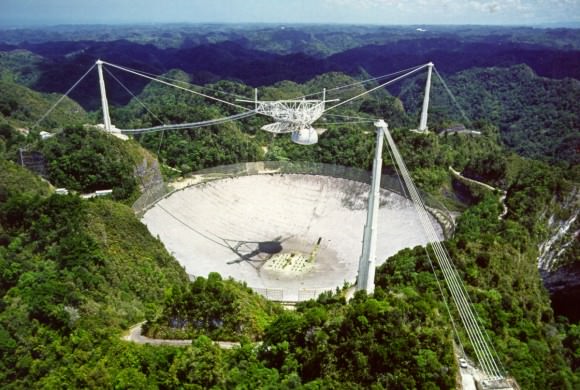
To clarify, FRBs are brief, bright pulses of radio waves that are periodically detected coming from distant galaxies. This strange astronomical phenomena was first detected in 2007 by Duncan Lorimer and David Narkovic using the Parkes Telescope in Australia. To honor their discovery, FRBs are sometimes referred to as “Lorimer Bursts”. Many FRB sources have been confirmed since then, some of which were found repeating.
The source known as FRB 121101 was discovered back on November 2nd, 2012, by astronomers using the Arecibo radio telescope. At the time, it was the first FRB to be discovered; and by 2015, it became the first FRB to be seen repeating. This effectively ruled out the possibility that repeating FRBs were caused by catastrophic events, which had previously been theorized.
And in 2016, FRB 121102 was the first FRB to have its location pinpointed to such a degree that its host galaxy could be identified. As such, the Listen science team at UC Berkeley was sure to add FRB 121102 to their list of targets. And in the early hours of Saturday, August 26th, Dr. Vishal Gajjar – a postdoctoral researcher at UC Berkeley – observed FRB 121102 using the Green Bank Radio Telescope (GBRT) in West Virginia.
Using the Digital Backend instrument on the GBRT, Dr. Gajjar and the Listen team observed FRB 121102 for five hours. From this, they accumulating 400 terabytes of data in the entire 4 to 8 GHz frequency band which they then analyzed for signs of short pulses over a broad range of frequencies. What they found was evidence of 15 new pulses coming from FRB 121102, which confirmed that it was in a newly active state.
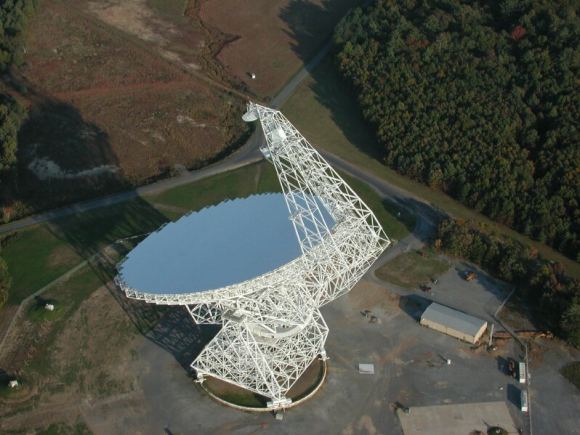
In addition, their observations revealed that the brightest of these 15 emissions occurred at around 7 GHz. This was higher than any repeating FRBs seen to date, which indicated for the first time that they can occur at frequencies higher than previously thought. Last, but not least, the high-resolution data the Listen team collected is expected to yield valuable insights into FRBs for years to come.
This was made possible thanks to the Digital Backend instrument on the GBRT, which is able to record several GHz of bandwidth simultaneously and split the information into billions of individuals channels. This enables scientists to study the proprieties and the frequency spectrum of FRBs with greater precision, and should lead to new theories about the causes of these radio emissions.
So even if these particular signals should prove to not be an indication of extra-terrestrial intelligence, Listen is still pushing the boundaries of what is possible with radio astronomy. And given that Breakthrough Listen is less than two years into its proposed ten-year survey, we can expect many more sources to be observed and studied in the coming years. If there’s evidence of ETI to be found, we’re sure to find out about it sooner or later!
And be sure to check out this video of the Green Bank Telescope and the surveys it allows for, courtesy of Berkeley SETI:
Further Reading: Breakthrough Initiatives



